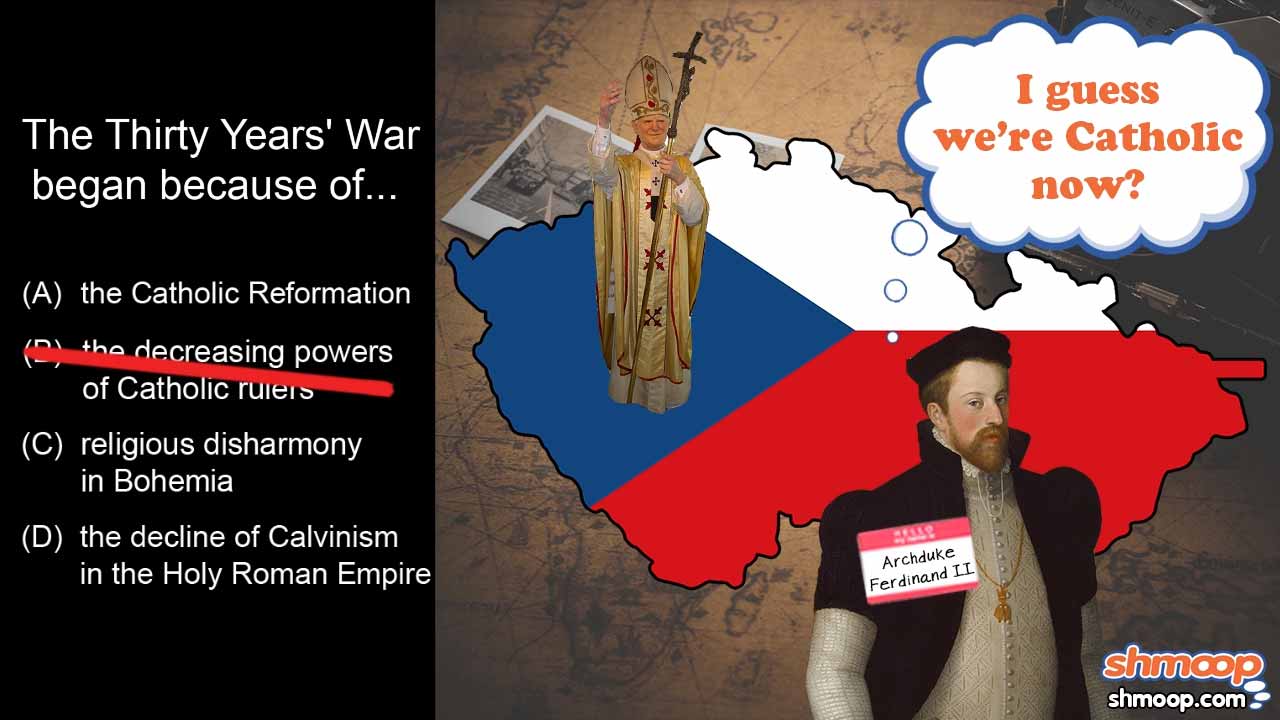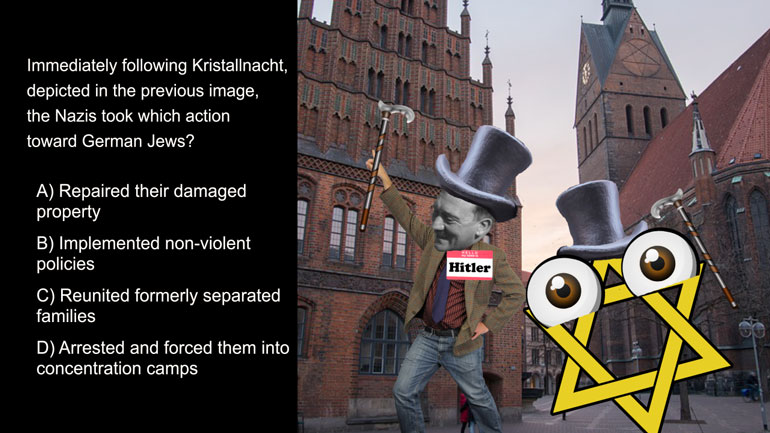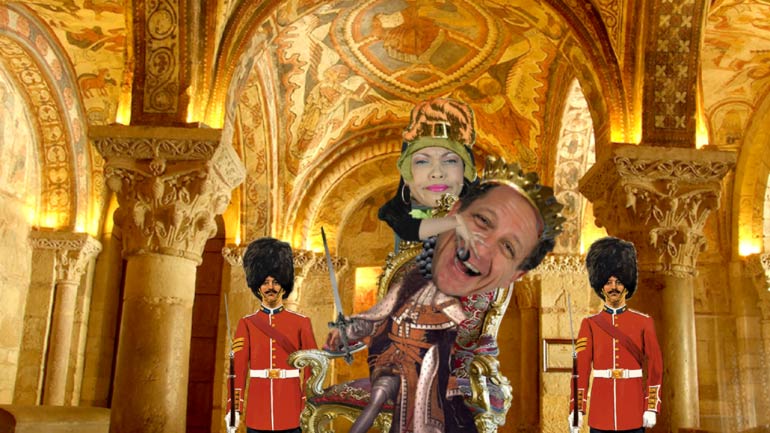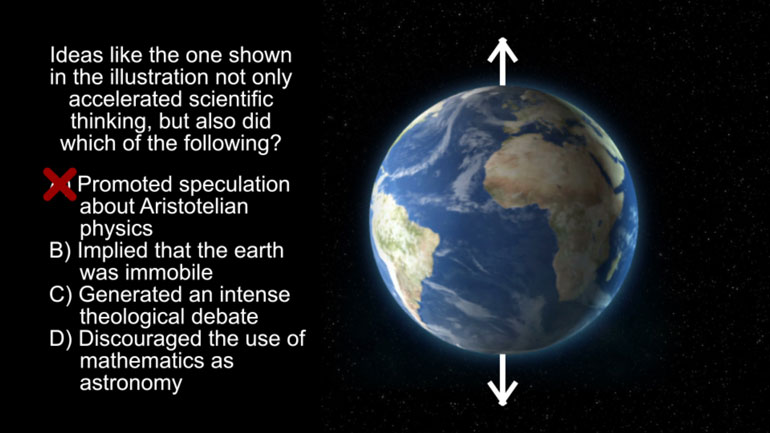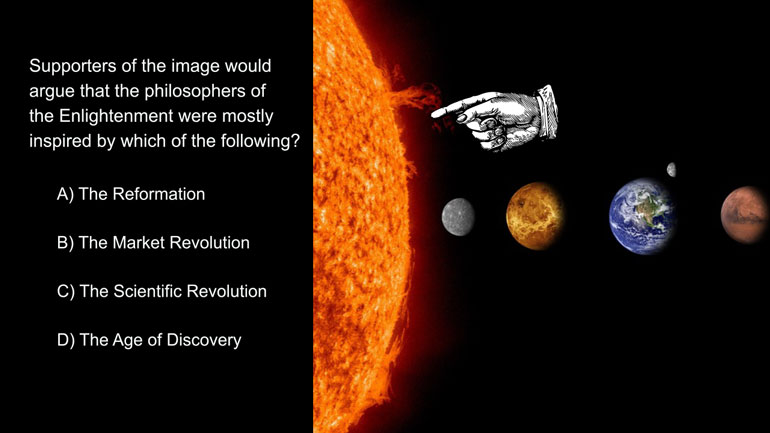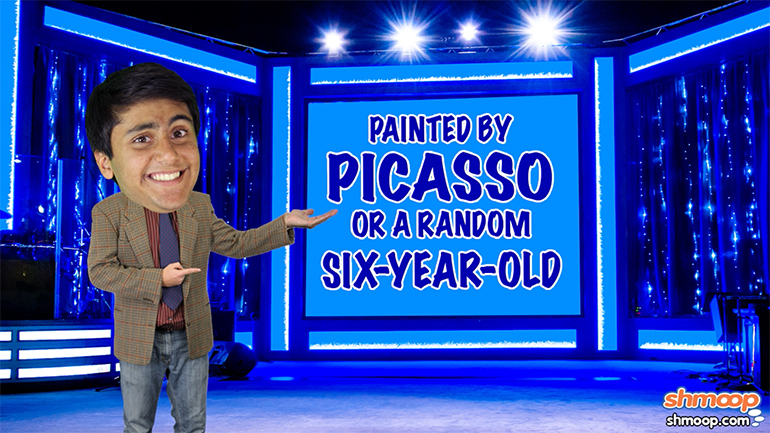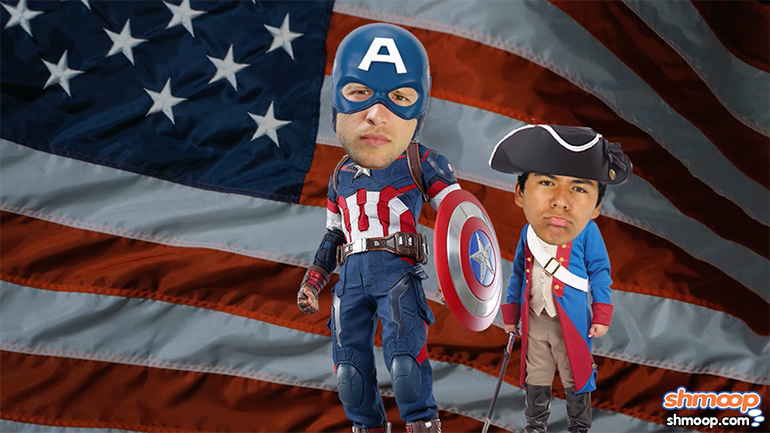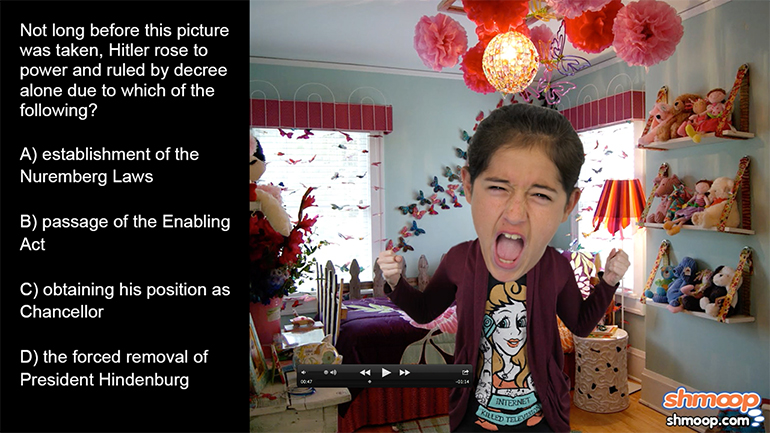ShmoopTube
Where Monty Python meets your 10th grade teacher.
Search Thousands of Shmoop Videos
Chronological Reasoning Videos 16 videos
AP World History 4.3 Industrialization and Global Integration, c. 1750 to c. 1900. What was the immediate cause of the First Sino-Japanese War?
AP World History 3.2 Industrialization and Global Integration, c. 1750 to c. 1900. The Sepoy Mutiny resulted in...what?
AP World History 3.1 Industrialization and Global Integration, c. 1750 to c. 1900. The 1869 construction of which important canal drastically chang...
AP European History 2.1 Period 3: 1815-1914 197 Views
Share It!
Description:
AP European History Period 3: 1815-1914 Drill 2, Period 1, Les Demoiselles d'Avignon represented the beginning of which of the following art movements?
Transcript
- 00:03
Here's your shmoop du jour brought to you by Pablo Picasso
- 00:06
star of shmoop's new hit game show painted by Picasso or a random six-year-old [Man pointing to a game show board for Painted by Picasso]
- 00:12
we'll get someone to play with us one of these days all right I'll take a look at
- 00:18
the image right there not by a six-year-old here's the question Les
- 00:22
Demoiselles d'Avignon represented the beginning of which of the following art [Le Demoiselles d'Avignon painting]
Full Transcript
- 00:27
movements and here your potential answers [mumbling]
- 00:31
Oh we forgot to add E) weirdism and F) creepyism but those would
- 00:38
all be way too obvious so let's just stick with the original form instead of
- 00:42
trying to work out the answer by looking at the art because well we need a break [Woman in art picture staring]
- 00:45
from the freaky stare coming at us from the squatting creeper there in the
- 00:49
corner let's use the date as a starting point if Pablo painted this in 1907
- 00:54
would that date fit with the timeline for A) futurism? Well, not quite seeing as
- 00:59
futurism and art movements that played with new advances in digital technology [men delighted with a TV]
- 01:04
didn't come out until about well 1909 and we know what you're thinking digital
- 01:08
technology in 1909 but err well people we're not talking about adobe photoshop
- 01:13
and macbooks here in this context we mean that the art was a commentary on [People looking at paintings]
- 01:17
new advancements like the car and the airplanes which is for the better really
- 01:22
because we'd hate to have seen Picasso's brilliant brushstrokes being replaced [Painting of a Picasso's image]
- 01:26
with a much more convenient and just as lazy.. brushstrokes photoshop filter
- 01:31
there yep, we use it here at shmoop all the time. Impressionism doesn't fit
- 01:34
timeline either seeing as it was prominent in the 1870s and 1880s well
- 01:39
before this work was even started impressionist artists communicated their [Claude discussing the brush stroke]
- 01:43
perspective on the mundane through their work painting images of natural
- 01:47
landscapes, daily life and portraits of your third period history teacher like [History teacher unimpressed holding a ruler]
- 01:52
that Fauvism was a short-lived art movement that lasted from 1904 to 1908
- 01:58
which yep, fits the dates for this painting it also emphasized strong color
- 02:03
and unrealistic values which also might sound accurate however when we say [Colorful painting and girl appears]
- 02:08
strong color we mean strong like Dwayne the rock Johnson
- 02:12
these colors make Picasso colors look well Michael Cera strong in comparison [Dwayne Johnson and Michael Cera together]
- 02:17
not our answer Picasso's surreal dissonant and fantastical art marked the
- 02:22
period of modernism that was popular throughout the late nineteenth and early [
- 02:27
twentieth centuries. Its best associated with art where traditions were thrown [Man painting]
- 02:31
out the window in exchange for experimentation which definitely
- 02:34
describes this painting now Pablo maybe next time you could experiment with
- 02:38
something a little less terrifying you know like a nice portrait of an
- 02:42
absolutely horrifying weeping woman great just great glad you're taking your [A painting of a weeping woman]
- 02:46
public's notes to heart.
Related Videos
AP European History Period 1: 1450-1648 Drill 2, Problem 1. As a result of the meeting in the image, which of the following occurred?
AP European History Period 3: 1815-1914 Drill 2, Problem 4. Paintings like the one depicted above were a direct reflection of what?
AP European History 1.2 Period 4: 1914-Present Not long before this picture was taken, Hitler rose to power and ruled by decree alone due to which...
AP European History 1.4 Period 3: 1815-1914. As evidenced through the passage above, Karl Marx was a passionate leader and is considered the father...
AP European History 1.1 Period 4: 1914-Present. A person who supported actions such as the one shown in the image would have supported The Final So...





